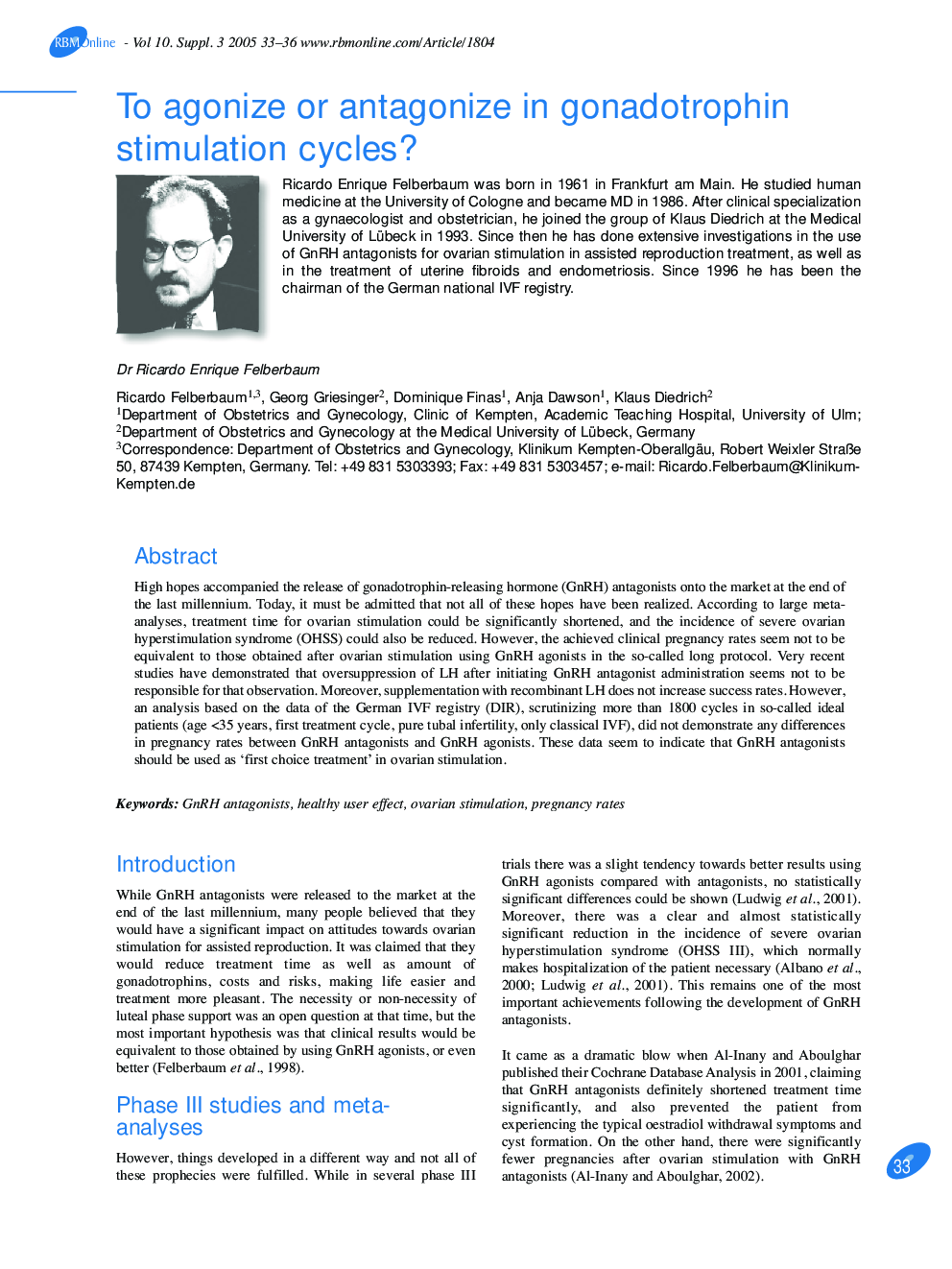| کد مقاله | کد نشریه | سال انتشار | مقاله انگلیسی | نسخه تمام متن |
|---|---|---|---|---|
| 9334958 | 1256853 | 2005 | 4 صفحه PDF | دانلود رایگان |
عنوان انگلیسی مقاله ISI
To agonize or antagonize in gonadotrophin stimulation cycles?
دانلود مقاله + سفارش ترجمه
دانلود مقاله ISI انگلیسی
رایگان برای ایرانیان
کلمات کلیدی
موضوعات مرتبط
علوم پزشکی و سلامت
پزشکی و دندانپزشکی
زنان، زایمان و بهداشت زنان
پیش نمایش صفحه اول مقاله

چکیده انگلیسی
High hopes accompanied the release of gonadotrophin-releasing hormone (GnRH) antagonists onto the market at the end of the last millennium. Today, it must be admitted that not all of these hopes have been realized. According to large meta-analyses, treatment time for ovarian stimulation could be significantly shortened, and the incidence of severe ovarian hyperstimulation syndrome (OHSS) could also be reduced. However, the achieved clinical pregnancy rates seem not to be equivalent to those obtained after ovarian stimulation using GnRH agonists in the so-called long protocol. Very recent studies have demonstrated that oversuppression of LH after initiating GnRH antagonist administration seems not to be responsible for that observation. Moreover, supplementation with recombinant LH does not increase success rates. However, an analysis based on the data of the German IVF registry (DIR), scrutinizing more than 1800 cycles in so-called ideal patients (age <35 years, first treatment cycle, pure tubal infertility, only classical IVF), did not demonstrate any differences in pregnancy rates between GnRH antagonists and GnRH agonists. These data seem to indicate that GnRH antagonists should be used as 'first choice treatment' in ovarian stimulation.
ناشر
Database: Elsevier - ScienceDirect (ساینس دایرکت)
Journal: Reproductive BioMedicine Online - Volume 10, Supplement 3, 2005, Pages 33-36
Journal: Reproductive BioMedicine Online - Volume 10, Supplement 3, 2005, Pages 33-36
نویسندگان
Dr Felberbaum, Georg Griesinger, Dominique Finas, Anja Dawson, Klaus Died,